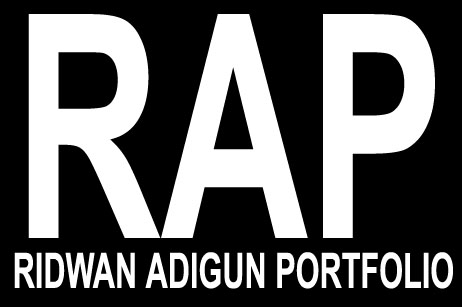
Diversity Art by VANDA ARORA aspire a world of unification and harmony across all human kind.
For the savvy investors and collectors, fine art can be more than just something beautiful to admire in a museum — it’s a valuable asset class. This is especially true for the new generation of millennials, who are the keenest art investors. Millennials make up 17% of investors spending $1 million or more on a piece of art. Which are more likely than any generation to view art as a financial asset and part of a comprehensive investment strategy.
In this article, we’ll discuss all about fine art, what makes it expensive, the types of art anyone can invest in, and what could make it a worthwhile investment.
We’ll also explore ways of investing in fine art, from the latest innovations in the art asset class to the centuries-old history of art auctions.
4 Is Fine Art a Good Investment?
4.1 Pros and Cons of Investing in Art
5 4 Different Ways to Invest in Fine Art
6 4 Tips for Investing in Art

Creation of Diversity Art by Vanda (2023)
What is Fine Art?
There’s a fair amount of disagreement about the exact definition of fine art. By one definition, fine art is art created solely for aesthetic and intellectual value rather than a practical purpose, which includes creative expression that may not necessarily be beautiful.
By another definition, fine art is the application of creativity and artistic skill to create something for aesthetic reasons. Historically, artists created work for wealthy patrons. But these days, an art gallery pays commission to show an artist work. Then it sinks considerable resources into promoting the show so that they can make sales.
keep in mind that the word “fine” does not inherently refer to the quality of the art. It refers to the purity of the discipline, such as painting, drawing, sculpture and so on. In the Middle Ages, fine art was split into seven categories that had nothing to do with making things for people to look at, such as (grammar and rhetoric).
Historically, fine art has been divided into eight accepted categories:
- Architecture
- Sculpture
- Painting
- Music
- Literature
- Drama
- Dance
- Film
As you can see, “fine art” is often a question of who’s asking.
So, what make a art ‘fine’?
We see a distinction between traditional art-work and modern artist, Traditional art are produced with real physical media, as opposed to digital art. Fine art, also referred to as “high art,” has long been held up as the highest standard of artistic expression. Fine artists make work that is purely created to be aesthetically pleasing and aesthetic purpose distinguishes the fine arts from the “low arts” which are traditionally designed for more practical purposes.
For this reason, many professional artists classify themselves as fine artists (such as a professional painter) to differentiate themselves from commercial artists (such as a professional graphic artist at a marketing firm).
Even so, artists have to sell their work in order to make money, one can make an argument that all art are commercial.
What Makes Art Expensive?
The short answer is that most art isn’t expensive, but some art are, and it drives prices across the art market.
The global art market is basically a giant consensus machine. But it’s also a surprisingly small and insular world consisting of personal connections between a gallerist and artist or gallerist and buyer.
The goal for a working professional artist is to ultimately sell art.
The problem is that regardless of quality, demand for art isn’t evenly distributed among living artists. Instead, buyers go after a small number of in demand artists, which drives the prices up.
When you invest in art, you typically hold it for a number of years, aiming to sell it later for a higher price.
This is especially true for some artists and artworks. Auction house Sotheby’s reported that, on average, 86.4% of Andy Warhol’s art sold at auctions increased in value. Between 2003 and 2017, the average compound annual return rate of his works was 14.2%.
Now, you can add different types of art to your investment portfolio.
Let’s take a look.
Types of Art You Can Invest in
Nearly anything can be considered an investment, depending on how popular an art piece or artist is.
Here are some of them:
- Paintings: Paintings are often the first thing we’d think of when considering investing in art. These include works on a two-dimensional surface like canvas using paints, such as oil or acrylic. An example of a valuable one is the 1932 Pablo Picasso painting Femme nue couchée which sold for $76.5 million in 2022.
- Photographs: Photographs are also a type of art to invest in.
In a 2020 auction, a 1942 photograph by Ansel Adams sold for an impressive $988,000. The piece was part of 115 other photos by Adams, which collectively sold for $6.4 million.
- Street art: Street art has grown in prominence after the popularity of graffiti since the 1980s. This form of art is often connected to social activism and includes stickers, murals, installations, and stenciled images done in public areas. In 2018, British graffiti artist Banksy’s most famous work, Girl with Balloon, sold for $1.4 million. Shortly after, the artist tried to destroy the art. Three years later, the semi-shredded version (now titled Love is in the Bin) sold for $25 million.
- Non-Fungible Tokens (NFTs): With the rise of digital assets, NFTs (a type of crypto art) are the latest type of art to enter the industry. An NFT lets you own a cool piece of digital art in the form of music, video, and images.
- Other Contemporary Art: Contemporary Art can also include installations, video art, performances, sculptures, silkscreen prints and more.

Bored ape NFT’s Art. reference to boredapeyachtclub.com
In 2022, Snoop Dogg has been one of the most visible NFT collectors in rap, and even made headlines last year when he claimed that he was actually Cozomo de’ Medici, whose collection is worth a reported $17 million.
Is Fine Art a Good Investment?
Fine art can be a worthwhile long term investment — so long as you’re realistic.
You have to know the limits of fine art: it’s complex and largely illiquid. You also typically need knowledge of the art market to purchase art that may increase in value.
You also need to know where to participate. Blue-chip art is high-value and established, and this category of art may be expected to hold steady or increase in value regardless of the economy, usually by auction heavyweights on the scale of Basquiat and Pablo Picasso.
For an ordinary investor (rather than collectors) to invest in this art, that usually means a fractional investing model rather than buying the whole artwork yourself. That way, you can take advantage of the blue-chip market without having millions.
Even if you take this fractional approach, you likely need experts in your corner to help you understand what you want to invest in.
Pros and Cons of Investing in Art
Let’s take a closer look at some of the pros and cons of fine art investment:
Pros
- Portfolio diversification: Art has a low correlation to traditional investments like bonds and stock trading. The art market has also performed well in historical and recent periods of volatility. As an alternative investment, art can also act as a hedge against inflation. During inflation, contemporary art prices appreciated at a rate of 17.5%, according to the Masterworks All Art Index.
- Possibility of returns: Blue chip art offers potentially attractive returns. Contemporary art prices have outpaced the S&P 500 by 131% over the past 26 years.
According to Masterworks’ internal research, contemporary art prices have also appreciated quicker than gold and real estate.
- Aesthetic pleasure: Art pieces are beautiful to look at and enjoy. If you enjoy adding pieces to your home or visiting galleries, you could turn your passion into an asset.
- Supporting an artist: Investing in art is a good way to support the dreams and livelihood of artists still producing work.
Cons
- May not always deliver expected returns: Identifying an artwork’s true value depends on factors like the economy and an artist’s reputation. So there’s a chance your investment may not bring the expected returns.
- Expensive storage and maintenance: Fine art must be physically stored and maintained well, like most collectibles. You can either do it yourself or pay for storage for your art collection — the latter can be an expensive affair.
- Art is not a liquid asset: Art is a long term investment, much like real estate. The pros suggest up to 10 years of patience before selling art. When doing their investment planning, art investors even include paintings as part of the assets they plan to pass on to the next generation.
- You need knowledge of the art market to make the right investment: Art investing requires a fair amount of research. As an art investor, you must stay informed to select pieces with potential long-term value.
Ultimately, fine art can be an attractive alternative investment. This is especially true if you’re passionate about art, focused on longer-term returns, have a higher risk tolerance, and can store and maintain the pieces well.
But we’ll give you more options to consider as a potential art investor…
4 Different Ways to Invest in Fine Art
You don’t need to only invest in physical pieces of art.
Here are 4 popular ways to add fine art (including physical works) to your investment portfolio:
The quickest way to invest in art (particularly for beginners) is to invest in fractional shares.
How Do You Invest in Fractional Shares?
The art investment platform Masterworks offers you an easy way to invest in fractional shares.
Masterworks researches and selects paintings from established artists whose markets have potential for price appreciation.
They then purchase the painting and file an offering circular with the SEC. This allows you to invest shares in a specific piece.
Masterworks will hold the artwork from anywhere between 3-10 years.
If the painting sells for a profit, you earn a portion of the profit as a shareholder.
Additionally, you can also buy and sell your shares on Masterworks’ secondary market. This can offer some liquidity.
2. Art Fund
Art funds are privately managed portfolios that generate returns through buying and selling art.
An art investment fund is managed by art advisory or investment management firms that receive a fee or portion of returns.
3. Physical Artwork
You can invest in physical artwork at various places such as museums, art galleries, online marketplaces, and auction houses.
Before buying art, you must thoroughly research the art piece and artist. If you’re interested in an auction house, look into their online auctions during quiet moments in the art world.
4. Digital Artwork and NFTs
Digital art is created using software, and some digital artworks are converted to NFTs. NFT art is essentially digital artwork backed by blockchain technology.
You may not have the same connection you would with a physical art piece.
4 Tips for Investing in Art

Lisa is APE is an inspired fine art by the popular bored-ape NFT’s. Bored Ape is a series of digital collectible NFTs (non-fungible tokens) featuring cartoons-style apes. Each NFT represents a unique, one-of-a-kind ape, with its own unique characteristics and attributes. The Bored Ape NFTs were created by the artist known as “Threefold Foundation” and sold on the Ethereum blockchain.
In addition, Bored Ape NFTs were highly popular and sold out quickly during 2021 nft’s bull run . This attracted a lot of attention and generated significant interest in the world of NFTs and digital collectibles. The uniqueness of each ape and the playful design make them appealing to collectors. As of 2021, the average price of a Bored Ape NFT is around $10,000, but some of the most rare and sought-after apes can sell for significantly more. Bored Apes are ERC-721 tokens which means they are unique, not interchangeable and one of a kind, which makes them special and valuable for collectors
1. Decide on the Risk You’re Willing to Take
There are many different ways to determine your own risk tolerance, but here are three common ways to approach it:
- Higher risk and high price tag: When you buy original art from certain art galleries, art auctions, or fairs, it may involve a high upfront cost. You won’t know how popular an artist will continue to be, making the investment a risky one.
- Lower risk and low price tag: You can buy a high-quality, limited edition print of an original painting. It costs a fraction of the original’s price and may be valuable.
- Lower risk and high price tag: You can buy certain kinds of art, such as blue-chip, with a high value up front and potentially less risk if the artist has an established track record.
2. Do Your Research
Always do your own research on the art market trends, art indices, artwork, and artists (emerging artists, too).
Art indices index hundreds of national and international art journals, along with art dissertations.
3. Establish Connections in the Art Circles
Connect with art gallery owners, veteran artists, emerging artists, art collectors, curators, and advisors. You can do this at an art fair, art auctions, and gallery shows. While this consumes time and money, it’s the best way to stay up-to-date.
4. Approach Art as an Investment
Investing in art requires thoughtful consideration after analyzing your research. Art collecting is not suited if you’re prone to impulsive purchases or wish to follow trends.
Conclusion:
Art can be a great way to preserve wealth, it is a vehicle for investment for any sane or sensible person. It is almost possible to predict what the art market will do, particularly with respect to specific artworks and specific artists, for a small capital investor, it is reasonable to invest in contemporary art, multi-millions – buy works created by one of the twenty five artists whose art controls over 50% of the world-wide art sales, another smart way to this approach is by doing a well due diligence before investing, such as asking a art advisor on a specific class of art to invest into.
Those who have done best as art investors have developed a passion for some small niche in art – something they love and cherish. They have learned everything there is to know about it and collected it and enjoyed it over a long period – often a lifetime. often developing friendships with the artists who make the works. When they get old, their collections are often donated to museums and cherished as great and glorious, worth incredible amounts of money. Sometimes, all or part of the collections get sold for immense amounts; but most great “investors” never started out that way. They began as curious and passionate lovers.

